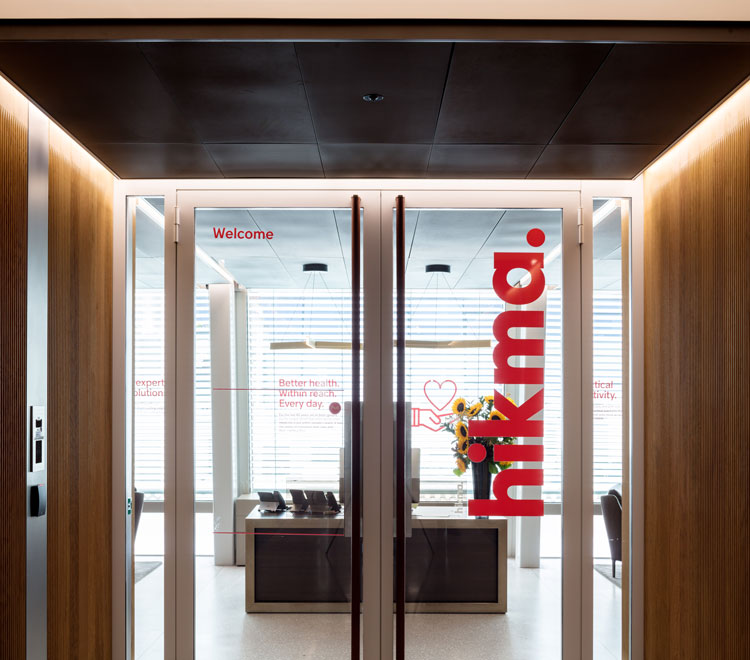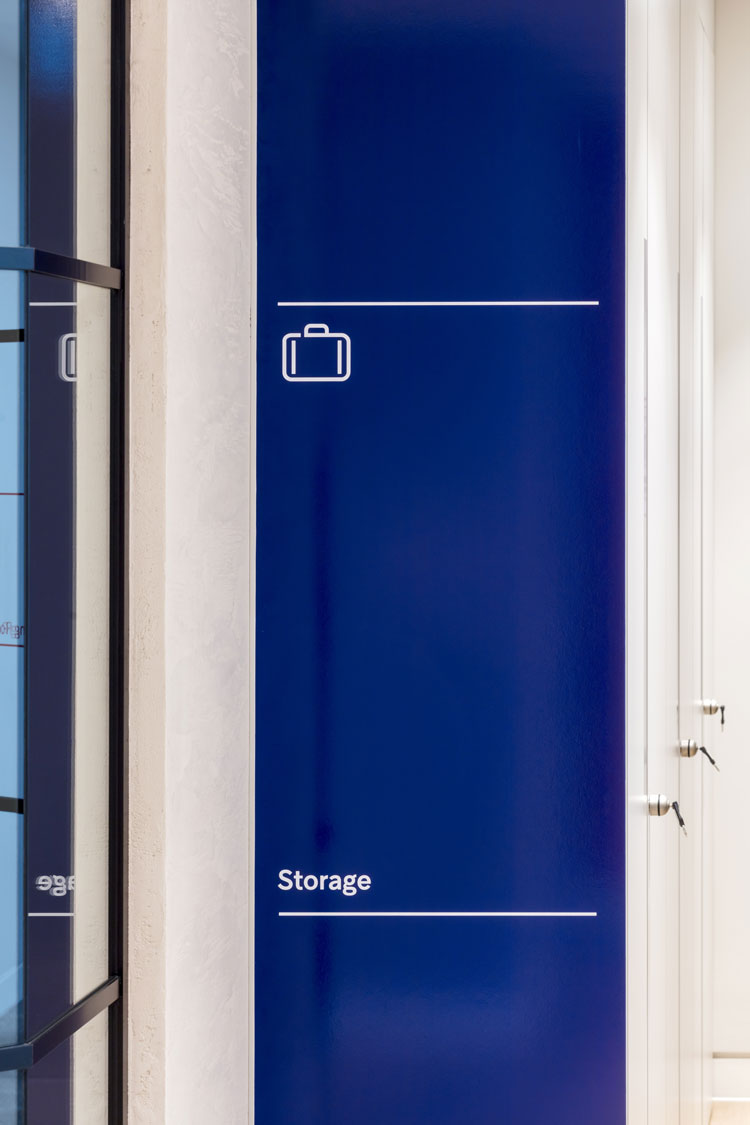How to become a: wayfinding designer
As part of our series looking at jobs in design studios, we speak to Pelin Morris, wayfinding graphic designer at Endpoint, about her fascination with human behaviour, why she observes people in shopping centres, and the importance of legibility.

Design Week: What is a wayfinding designer?
Pelin Morris: Wayfinding is how people engage seamlessly in a built environment. Creating these systems is a strategic exercise and design process, which combines many disciplines from behavioural psychology to product design, graphic design and engineering. It all starts with good analysis of a building or urban space.
The main aim is to provide effective navigational designs for large, complex environments. We create a graphic language, consisting of typography, iconography, colours, patterns, symbols, signage, maps, small graphics, environmental graphics and more. We want to create inspirational but essentially functional spaces — spaces that are memorable and inviting but also easy to navigate, where information is given in the clearest way.
We have a range of clients, from the hospitality and health sectors, to architectural studios, interior designers and brand studios. We’ll either work directly with an end client or via a design studio, which will brief us. We create wayfinding for everything from hotels and hospitals, to stadiums and parks.
DW: What’s your educational background?
PM: It’s an interesting mix — I started with a Bachelor of Arts (BA) degree in anthropology at Istanbul University in Turkey, which is where I’m from. I’ve always been very curious about human behaviour. While studying, I wrote a 250-page long thesis. I realised that people don’t have the time or energy to read something that long, so I thought about what shortcuts I could take to communicate my findings, and that’s when I found infographics. I went on to do a postgraduate diploma (PGDip) in design for visual communications at University of the Arts London (UAL), then a Master of Arts (MA) in graphic design, finally graduating in 2010.

DW: What’s your career journey been so far?
PM: I started in branding, rather than wayfinding – all my interests led me to identity design. I got a freelance job for London College of Contemporary Arts (LCCA), as its in-house graphic designer. I worked across print and digital platforms and also designed the wayfinding for the university’s campuses – that was my eureka moment.
My work was featured in a book called Wayfinding Design in the Public Environment by Andrew Hodson in 2015, and after that, I continued working as a freelance graphic designer across hospitality, restaurants, property development and events. I was later involved in creating the National Theatre’s external wayfinding design. I realised that over the years, I had developed a specialism in wayfinding. After freelancing for two years, I joined Endpoint in 2017.
DW: What first got you interested in wayfinding?
PM: Creating the wayfinding for the LCCA campuses was the first thing. I’ve always been really interested in the impact that design can have on people, and how it can influence human behaviour. When I first saw my designs go from sketches to implementation, where people were engaging with it and using it to navigate, was really rewarding – that’s when I realised that my wayfinding work could touch people’s lives.
DW: What does a typical working day look like for you?
PM: Some days, I’ll be out of the office on site visits. If I’m not, then I start at 9am with a cup of coffee, catch up on emails, check my diary and discuss my workload with the project managers.
I will then usually work on multiple projects in one day. If a project is in the strategy stage, I might be deeply focused on architectural plans, and suggesting specific positions where signs should be located to achieve the best wayfinding solutions. If it’s in the concept stage, I might be visiting a typography library, such as the St Bride Foundation, to choose the right fonts for signs, or the British Library’s map reading room for a map-based project.
I’ll also do online research, though it’s not always possible to find specific historical pieces this way. I make sure to read up and follow the latest trends in graphic design, too.
After doing research, I’ll try out different fonts, draw pictograms and patterns, and test different sizes. I’ll then print these and take them to sites as “prototypes”, which will be tested by focus groups. Legibility is one of the main objectives of wayfinding.
On the site visit, I’ll bring in strangers to test these provisional graphics, giving them different routes and scenarios, and gathering their feedback afterwards.
Understanding human behaviour and movement is a big part of my job, particularly how people navigate crowded spaces. I make sure I visit the space I am working on and spend a big chunk of time there observing people.
Once we’ve settled on graphics, I’ll prepare the layouts to send to sign manufacturers – there are strict rules around this, such as the size, spacing and proportion to fit certain sign types.
Wayfinding is very collaborative work. I’ll have lots of meetings with different professionals daily, including product designers and the production team. I’ll also present my work to clients.

DW: What are your main day-to-day tasks?
Conducting online and real-world research, prototyping graphics, conducting focus groups and testing phases, visiting sites, presenting work and meeting with other stakeholders and team members.
DW: How creatively challenging is the job?
It’s really challenging because the main aim is to make something that’s functional but also a great design. There are also many crucial, practical details to think about, such as whether a sign needs to be updated regularly, will certain materials last outdoors in different weather conditions, will a typeface be legible enough.
DW: How closely do you work with graphic designers?
Fundamentally, we’re the same. We share the same passion for typography, symbols and layout. But on top of this, wayfinding designers need to think in large-scale more, and give more consideration to space. Our designs need to be very legible and instantly meaningful to a very wide range of people. Additionally, we create 3D products, so need to have a deeper understanding of materials and lighting.

DW: What strengths do you need to be a wayfinding designer?
You need to really understand human movement and have a big interest in simplifying complex information. With wayfinding and signage, people have a very short window of time in which they need to receive and digest information.
You also need to have a good eye for detail. Strong editorial design skills are important for creating clear, graphic layouts, such as for signs. You also should be able to imagine your work in a large-scale environment.
You might have different clients from other designers – they’re likely to be other creatives, such as branding designers, interior designers, architects and property developers. As well as listening to them as experts, you will sometimes need to challenge them, which can be tough.
Finally, you need patience! Projects are relatively long-term and tend to last between one and five years, with office or residential wayfinding projects the shortest and a new museum or stadium the longest. If you’re producing work for a new building, you might not see the final outcome for years, whereas if you’re a print designer, you’ll likely have the book in your hands in just a few months.
DW: What are the best parts of your job?
PM: The variation of tasks and mix of clients. One day, it can be a residential project, another day it’s a stadium. It keeps you on your toes and never allows you to get bored.
It’s also great seeing people being literally guided by your designs and witnessing them help people. It gives you a real sense of purpose, which is very important to me.
DW: What are the worst parts of your job?
PM: It’s difficult to switch off because the outside world is full of inspiration and examples! It’s almost impossible. Also, there can be tight deadlines, which is common in the creative industries. Finally, it can be challenging balancing legibility rules, production limitations and planning permissions with excellent graphic design. But at the end of the day, it’s satisfying to tackle this and end up with a great outcome.

DW: If you were interviewing for a junior wayfinding designer, what would you look for?
PM: I’d look for someone with a very creative portfolio, who can explain the thinking behind their projects. They would need a good eye for detail and a big interest in typography and infographics specifically, as well as a love for layouts, built environments and the world around them.
DW: What advice can you offer people considering a job in wayfinding?
PM: Do research into design trends and inspiration, and observe people moving as much as you can. Question the way people behave and why they move the way they do. Your findings will become very handy in coming up with design solutions — so log them! Go to a shopping centre and make notes, pick out where people are struggling and need directional guidance. You can tell this when people are looking around them, looking lost and don’t know where to go.
DW: What is the job market like for wayfinding designers?
PM: Studios have started realising that wayfinding is a profession in its own right — the number of roles is growing. Connect with studios you’d like to work with and inquire. Wayfinding roles are not as common as graphic design ones, but there is a lot of freelance work in the area and certain studios are investing — Endpoint, Cartlidge Levene and Whybrow, to name a few.
Salary expectations based on Design Week Jobs:
Salaries are similar to that of graphic designer roles.
Graphic designer: £22,000-£30,000 per year
Midweight graphic designer: £30,000-£35,000 per year
Senior graphic designer: £35,000-£50,000 per year
To browse graphic and wayfinding designer roles, head to Design Week Jobs.
Discover more:
-
Post a comment




